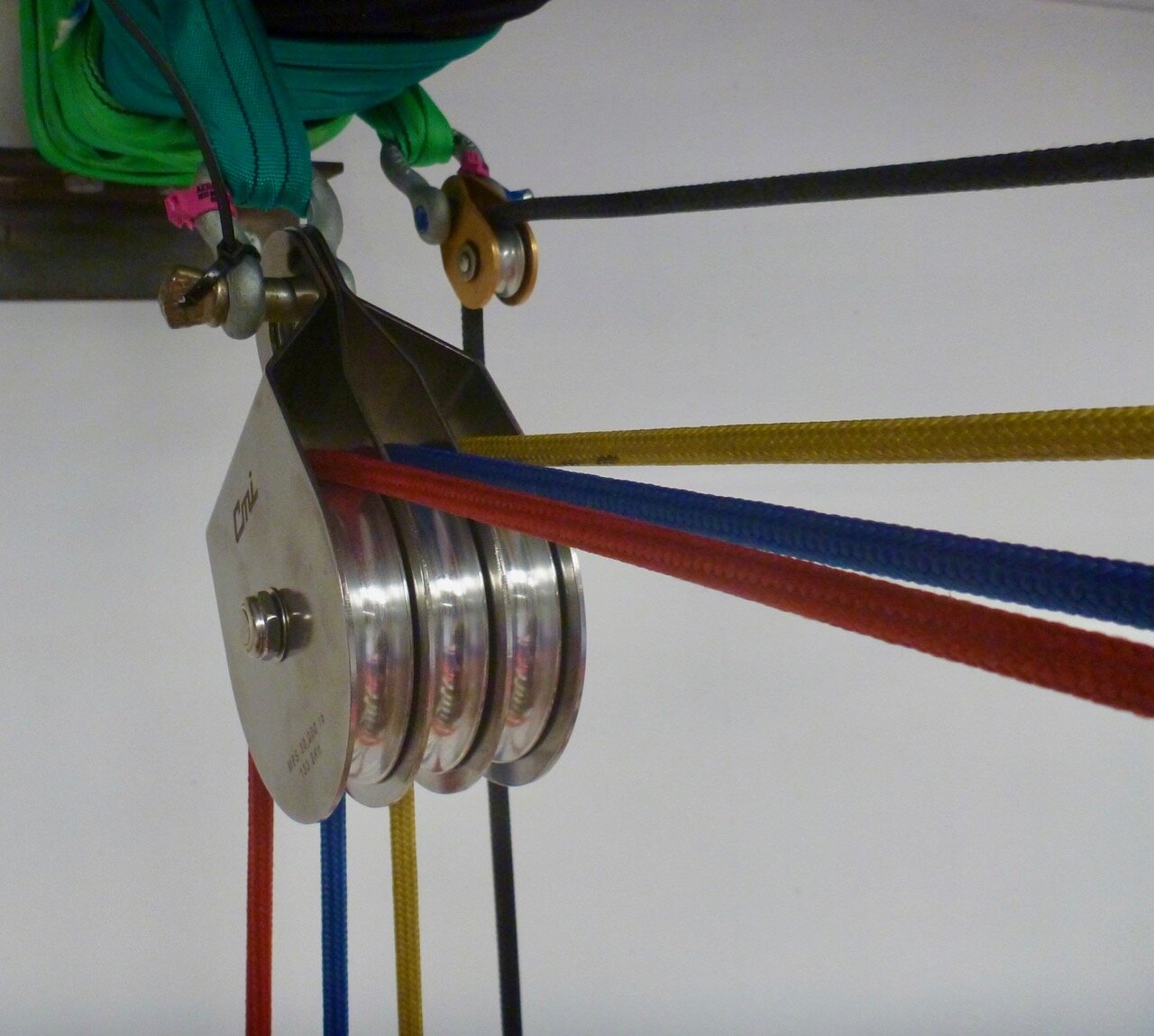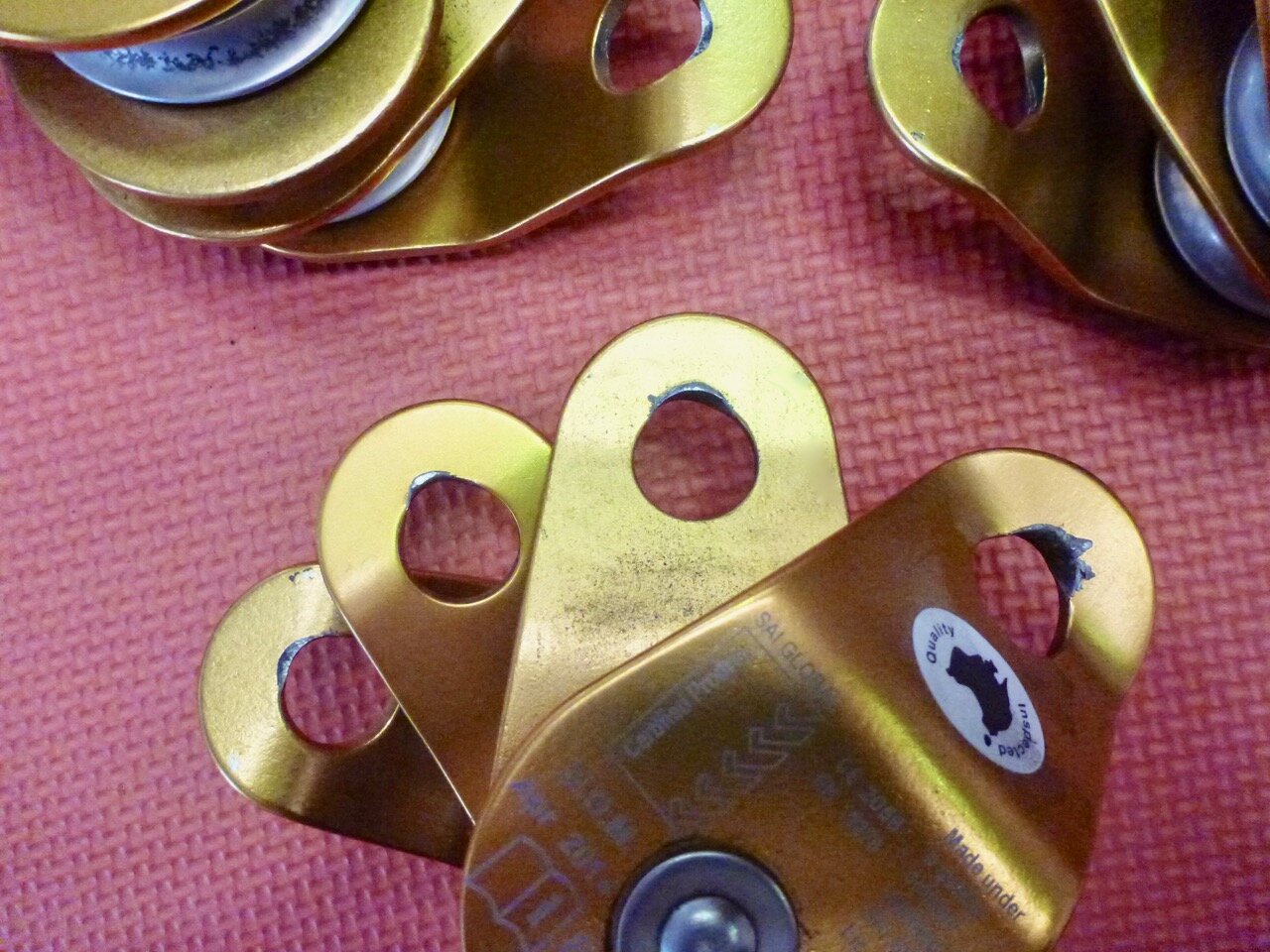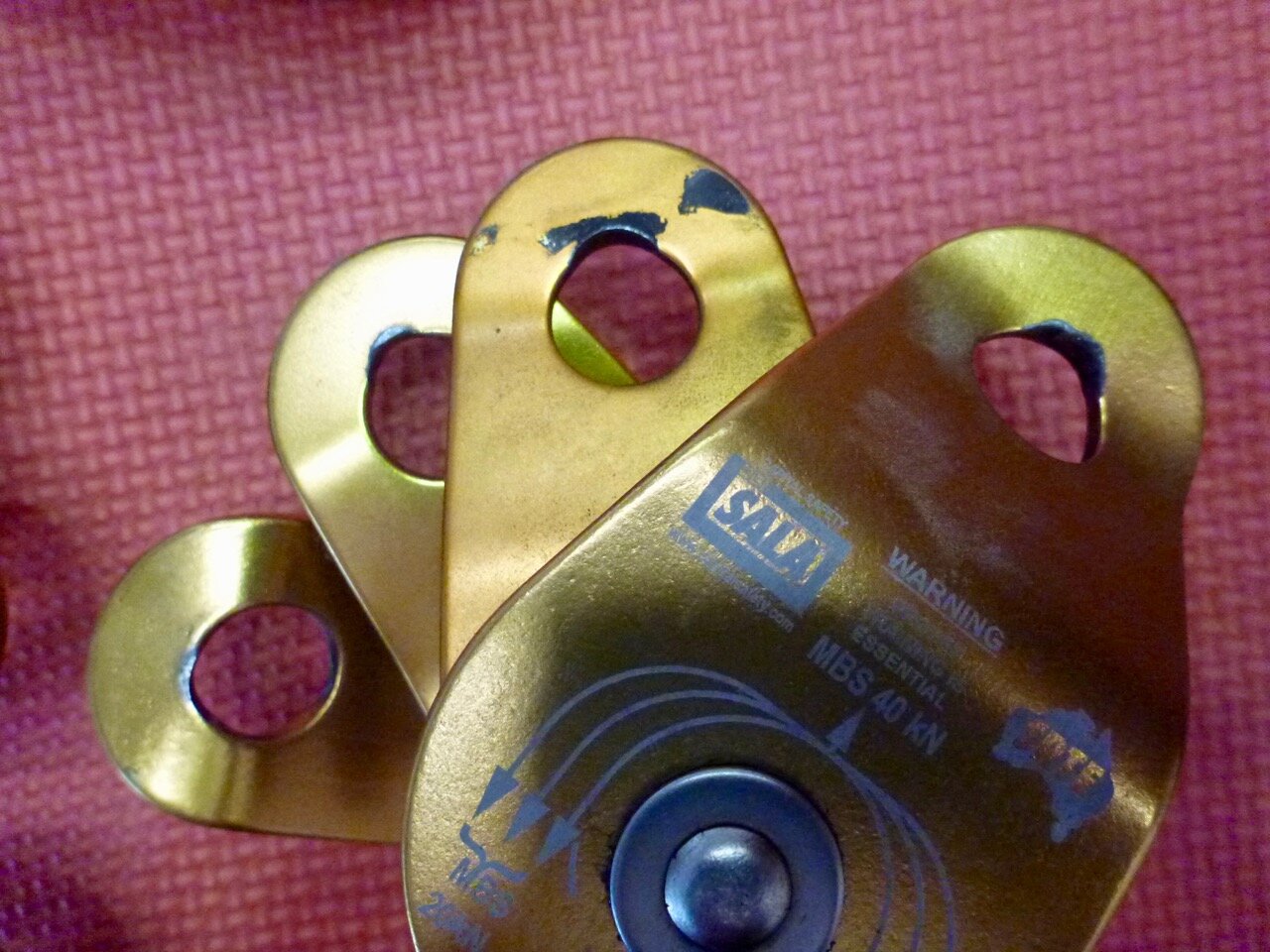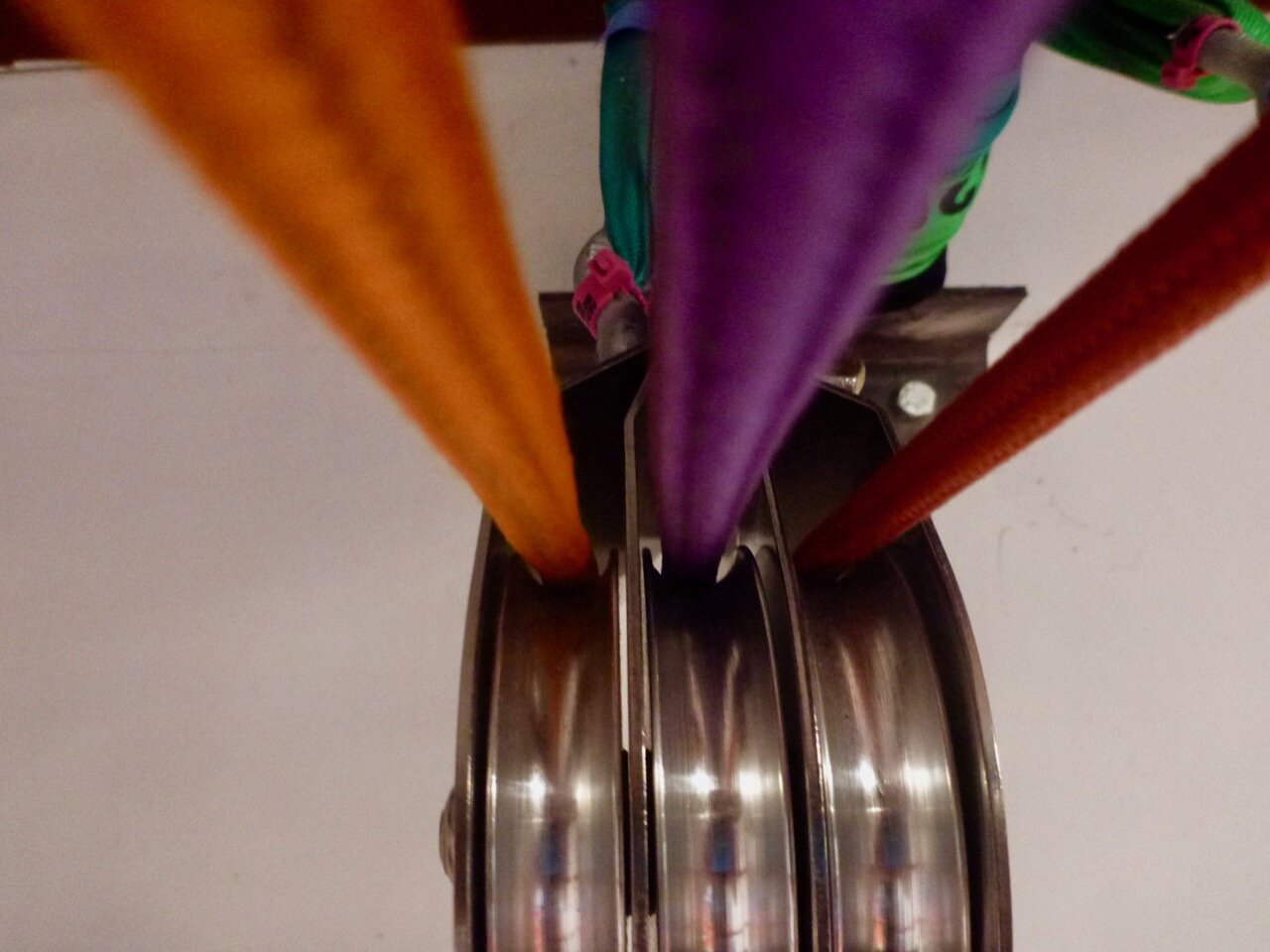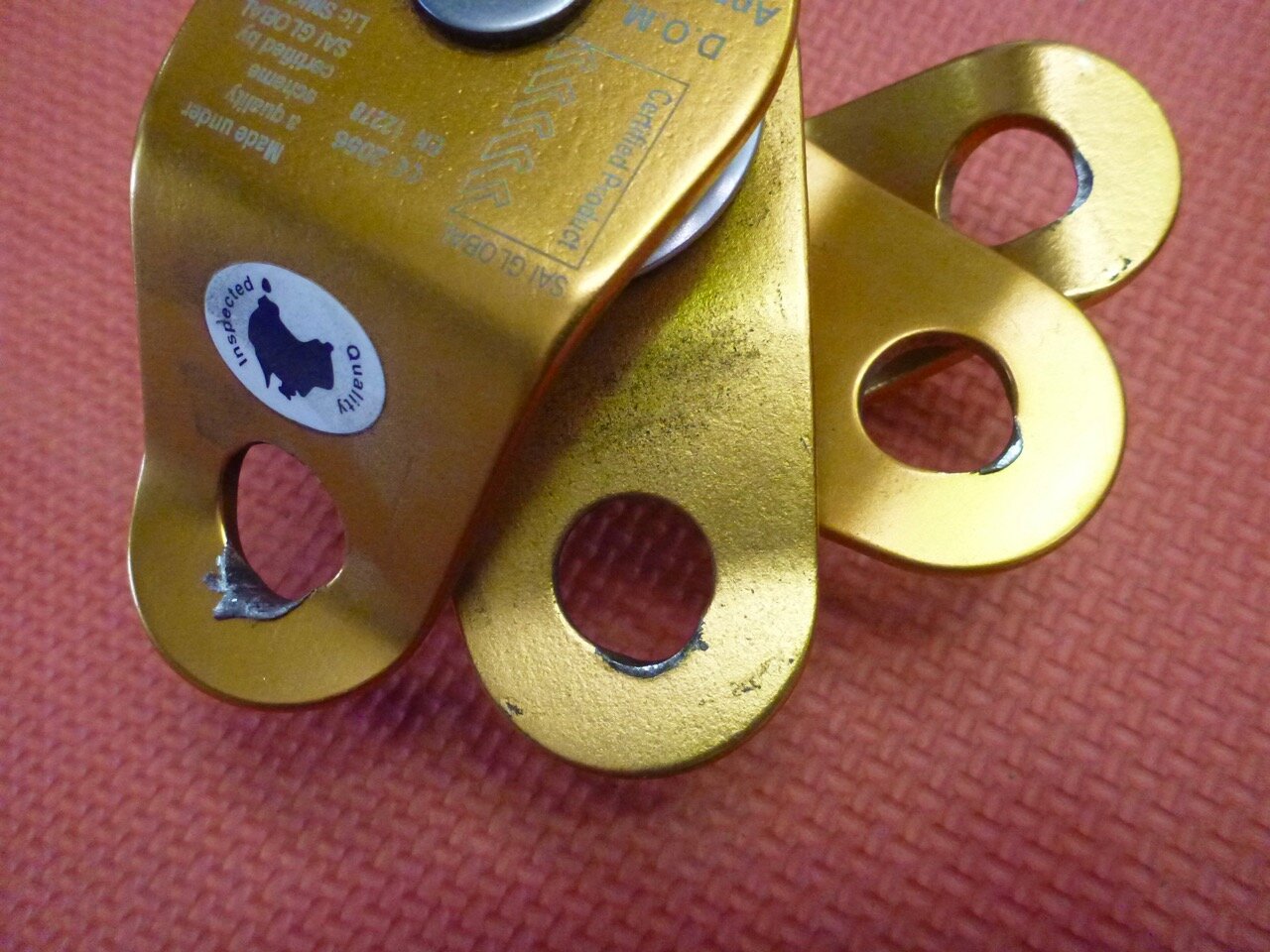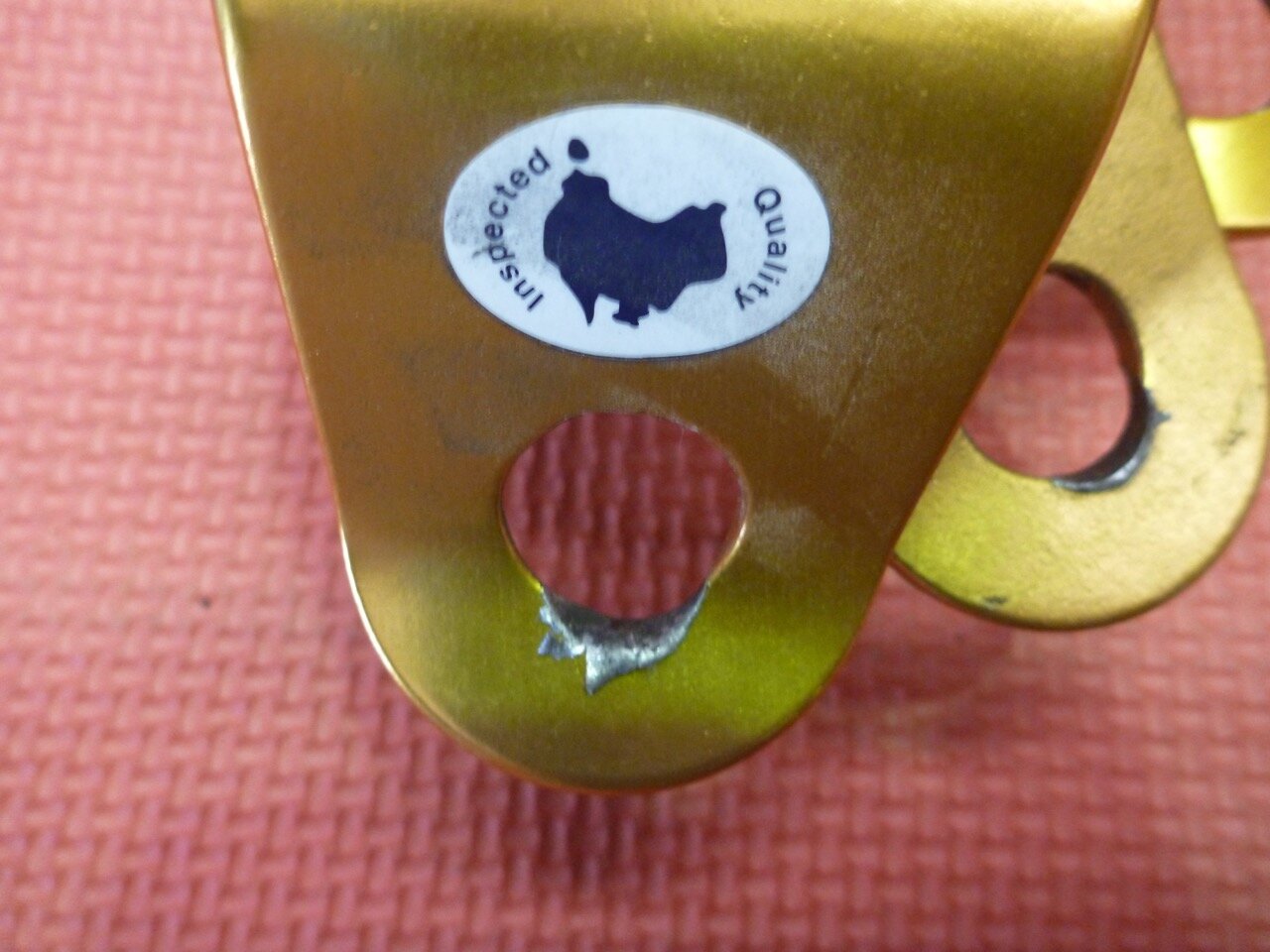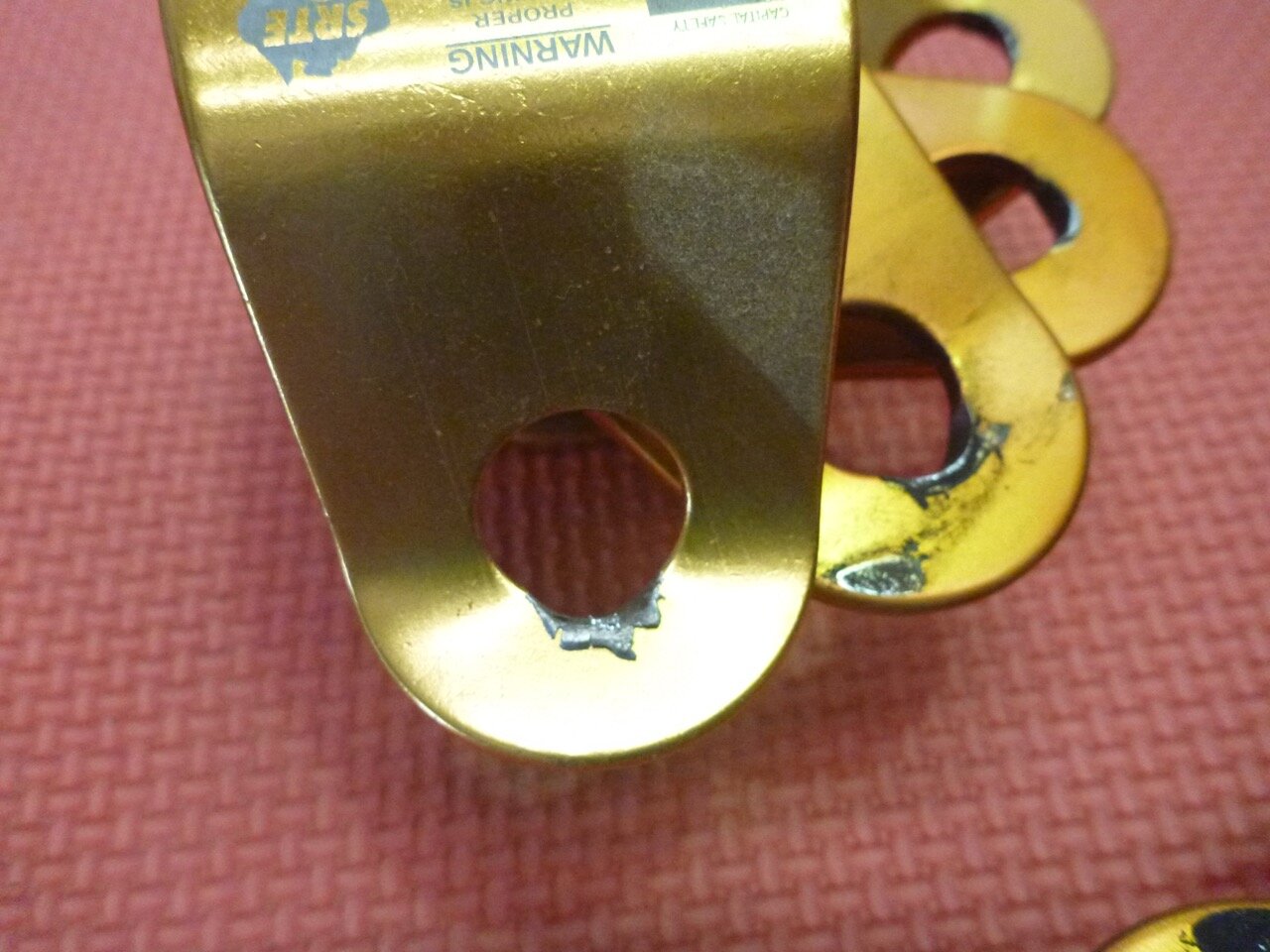Acceptable Wear Limits for Rigging Equipment
Gavin Smith
For this case study, we're going to talk about why we select specific rigging equipment, even though it's designed primary use may not be the intended end-use. Every item of equipment in a rigging system is a critical link and is only as good as the weakest link; therefore it's crucial to identify where that weak link is and how we can improve it. The best way to prevent a break in the chain is to employ a proactive approach to the care, use; handling; selection; maintenance and continuous inspections.
Acceptable wear limits are difficult to define in the general sense of the term, but easy to spot when you know what you're looking for, and often, it's as simple as seeing something that doesn't look right.
In our case study example, this rigging system has alloy swivels connected to steel carabiners and synthetic fibre slings and rope attached to steel hardware etc. No big deal about any of this but there are specific wear limits to observe, and these are just a few of the areas we can advise you on to ensure you are operating at the safest level.
We recently performed an annual rigging inspection for a client who operates a sizeable aerial art studio in Sydney NSW Australia and. we decided to replace the main diversion sheaves in the studios running rigging system. These sheaves are alloy triple snatch blocks that have been in service for some years initially selected for light to medium-duty use, as is the often the case, our clients business has grown, and with that, the use of the rigging system and the loads placed on them also increased, so it was time to upgrade.
The rigging system consists of 21 lower-able single points diverted across to a wall and then terminated at an anchor bar with a simple friction hitch. The loads placed on the system are extreme, dynamic and often always found in circus aerial training and performance studios.
For the upgrade, we selected heavy-duty CMI stainless steel 4" triple sheave snatch blocks with sintered bronze bushings. The reason we chose these pulleys were simple; they had to be durable, have an excellent D:D (Drum to Diameter ) ratio and be made from hard-wearing materials.
Our business has many facets of design, engineering and safety and we dedicated years of research and development to provide our clients with the knowledge and confidence they can trust that their rigging equipment is safe and compliant to any safety and engineering standards.
Drop us a line today, and we look forward to hearing from you soon.

